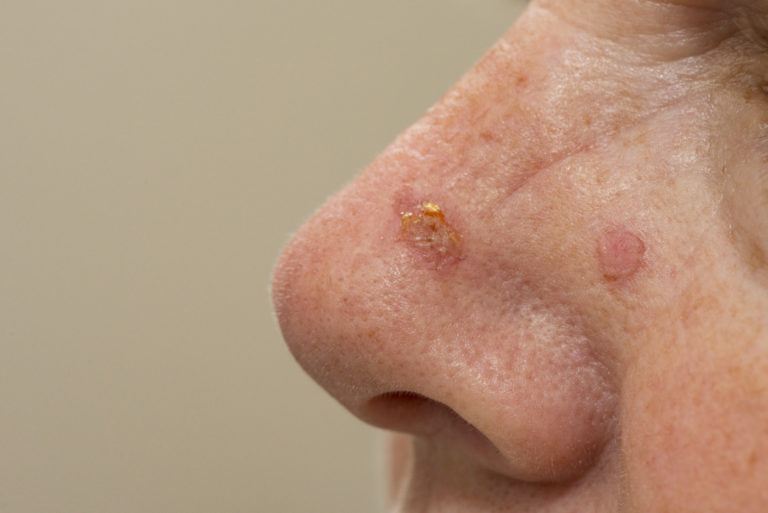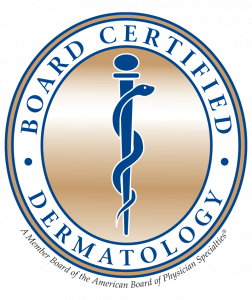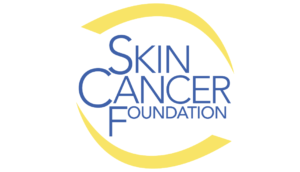
What are Actinic Keratosis?
Actinic keratosis are rough scaly patches on the skin caused by chronic sun exposure. They are more common in fair skin/blue-eyed people and are precancerous. If left untreated, actinic keratosis may progress to squamous cell skin cancer. Therefore, early treatment of actinic keratosis will reduce the risk of developing skin cancer. Treatments for Actinic Keratosis include: Fluorouracil, Imiquimod, Picato, Diclofenac, Liquid nitrogen, and PDT.
What is Photodynamic Therapy (PDT)?
 PDT is an FDA approved treatment for actinic keratosis. It works through the topical application of a photo sensitizing chemical (Levulan) which is then stimulated by a blue wavelength of light. The chemical reaction subsequently destroys actinic keratosis (i.e. precancerous lesions).
PDT is an FDA approved treatment for actinic keratosis. It works through the topical application of a photo sensitizing chemical (Levulan) which is then stimulated by a blue wavelength of light. The chemical reaction subsequently destroys actinic keratosis (i.e. precancerous lesions).
Photodynamic Therapy (PDT) FAQs
What are the advantages of PDT?
1. PDT is applied to the entire field of sun damage, thereby destroying actinic keratosis that are both visible and microscopic.
2. The exact areas to be treated are applied by the physician to ensure the accuracy of the treatment.
3. Scientific studies have shown that people who have undergone PDT have improved skin texture and tone, as well as an improvement in their overall appearance.
4. In addition, the reaction that develops from PDT often subsides within two weeks whereas the reaction from Fluorouracil or Imiquimod may last longer than four to six weeks.
5. You will not need to fill a prescription.
6. No scarring from PDT has been reported to date.
7. Finally, most Medicare plans cover the cost of PDT through a medical benefit.
What can I expect on the day of the PDT procedure?
1. We will lead you to our procedure room and informed consent will be obtained.
2. We will cleanse your face with alcohol/acetone
3. Levulan (a photosensitizing chemical) will be applied to the treatment area.
4. The Levulan will need to incubate for one to two hours prior to illumination with light. You are permitted to leave the office during the incubation, but you are not permitted to wash your face during this time.
In general, lesions on the face need to incubate for 60 minutes, whereas lesions on the scalp need to incubate for 60 to 120 minutes depending on the thickness of the lesions. In addition, the scalp will be occluded with Saran wrap after application of Levulan to enhance penetration.
On occasion, loose scale or crust will be gently removed from the skin surface.
5. Once incubation is complete, you will be positioned underneath the U blue light (for 17 minutes) at which time the photodynamic reaction occurs.
6. It is normal to experience a burning sensation while you are exposed to the light. We will hand you a fan to help cool the area during the treatment. But if the reaction is too intense, we can temporarily pause the treatment. Less than 3% of people discontinue treatment due to severe burning and stinging.
Can you tell me about the recovery after PDT?
Immediately after the procedure, your skin will look bright red and you may experience a burning sensation.
Over the next 48 hours, it may look like you had a sunburn with swelling.
Areas around the eyes and lips may look more extreme.
Some people experience a more intense reaction with crusting and oozing, followed by skin peeling.
In general, the more intense the reaction, the better the result.
Discomfort usually subsides by day 3.
All scabs will typically heal by day 14.
Over the next couple weeks, you may see some discoloration (lighter or darker areas) which will spontaneously resolve.
Your skin should feel smoother a month after treatment indicating a reduction in actinic keratosis.
Do I need to stay out of the sun after PDT?
Yes.
You will be overly sensitive in the sun for 48 hours.
It is best to remain indoors. But If you go outside, you must wear a wide brimmed hat and a zinc-based sunscreen (such as Neutrogena Pure and Free baby).
Also, try not sit near a window in your home or under a lamp, as this light may produce more burning sensation too.
How do I treat my skin after PDT?
– Apply ice packs or washcloth with cold water as needed for discomfort.
– Use a gentle facial skin cleanser such as Dove sensitive skin soap or Cetaphil.
– Use Cerave cream or Cetaphil cream (not lotion) to moisturize OR Vaseline ointment/Aquafor ointment if crusting develops.
– Use OTC 1% hydrocortisone ointment twice daily if you are irritated.
Call us at (248)792-3785 or e mail at TopDoc@SingerDerm.com if you have questions or concerns.
How many PDT sessions will I need?
Most patients will require 2 sessions spaced 4-6 weeks apart.
Who should NOT undergo PDT?
Those with the following medical conditions should avoid PDT:
History of porphyria
Blood clotting defects
Pregnancy or Nursing
Inability to avoid sun exposure, bright lights for 2 days

 PDT is an FDA approved treatment for actinic keratosis. It works through the topical application of a photo sensitizing chemical (Levulan) which is then stimulated by a blue wavelength of light. The chemical reaction subsequently destroys actinic keratosis (i.e. precancerous lesions).
PDT is an FDA approved treatment for actinic keratosis. It works through the topical application of a photo sensitizing chemical (Levulan) which is then stimulated by a blue wavelength of light. The chemical reaction subsequently destroys actinic keratosis (i.e. precancerous lesions).





